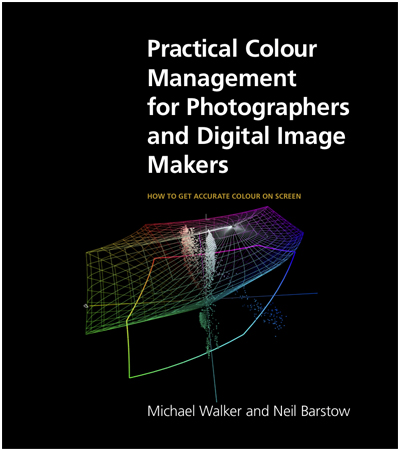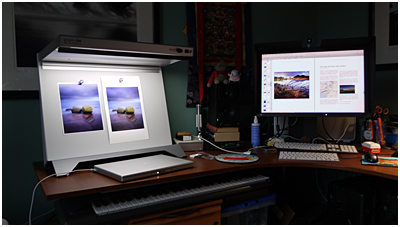Over the past few months, I've been delving into colour management - specifically in the printing side, as I feel I understand enough about monitor profiling.
But I have to confess that I wonder if monitor profiling is as understood as it should be?

Neil Barstow of Colourmanagement.net has produced along with Michael Walker, a nice little e-Book about getting accurate colour on screen, and I think it's very much worth a look at even if you think you're already up to speed on calibration and profiling of your monitor.
The biggest thing for me, is how our perception of white changes depending on our environment. I edit in a room with a Solux lamp these days, because the bulb produces an even level of luminance across the spectrum. It's not ideal, but it's an improvement upon normal tungsten light bulbs. Many beginners edit their images in a tungsten light room in the evenings, and they have no idea that this has an impact on how they perceive the colours they are seeing on screen.
I also use a neutral mid-grey onscreen desktop background, because this also affects my judgement regarding colour.In the eBook, this is discussed, also the difference between calibration and profiling, which are very different processes. Calibration for instance, is all about getting your monitor to a specified condition with regards to targeted white and black luminance, colour temperature and gamma or tonal reproduction curve. Profiling is about measuring the characteristics of how colours are displayed at it's calibrated state.
This is where an ICC profile comes into play. It both holds the display system's calibration and is a way of describing the actual characteristics so that colour management software can display the correct colours. What is in your file, i.e. the actual numerical pixel values should be represented at best on your monitor, i.e. each pixel is displayed as it's numerical values truly relate to human vision and this can only happen once your monitor is calibrated and then profiled.
The eBook finishes off with suggestions and bugs found using colour management within OSX (Snow Leopard is discussed here - especially regarding ICC profiles and the issues with type 4 Profiles), and of course Windows is covered too.
In general, this is a good eBook about a very complex subject and in it, Neil and Michael give enough information so that you're not too confused, but a bit more aware of the issues involved in getting good colour accuracy on your monitor. You may be interested to note that I recently purchased a copy of the CMnet/Pixl Verification Kit proof and a viewing booth (for print evaluation). An accurate, measured and certified proof is the best - in fact the only way to determine if the calibration and profiling of your monitor is spot on.
Here's a little snap of my studio desk at home with an Eizo monitor and the viewing booth to the left (note the work in progress eBook about TPE that I'm slowly getting my way through!). These things are really worth the money if you intend to evaluate your prints and also, to get the monitor profiling spot on too.
For more information about colour management and some expert advice, Neil Barstow can be contacted at Colourmanagement.net and of course, if you'd like to try to learn more about monitor profiling and calibration, then I can suggest buying his eBook as it will do you no harm whatsoever.

